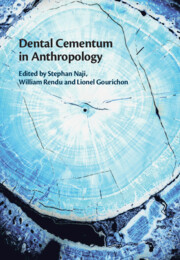Introduction: Cementochronology in Chronobiology
Published online by Cambridge University Press: 20 January 2022
Summary
The purpose of this volume is to gather interdisciplinary scholars to explore and implement cementochronology, the analysis of cementum growth, from a chronobiology perspective. Chronobiology, the study of biological rhythms, rests on the premise that the regular rotation of the earth around its central axis and the sun produces two fundamental periodicities to which all life has become adapted. The evolutionary "clock-shop" model posits that circadian clocks govern daily rhythmicity, and circannual clocks provide a seasonal endogenous calendar. We present current theories explaining and interpreting cyclic growth marks observed in hard tissues, especially cementum. Repeated empirical and validation studies are now available to explain cementum's annual/seasonal periodicity, even though specific molecular pathways are still needed. We present our evidence in three parts covering cementum biology, protocols, and anthropological applications and argue that cementochronology with its regular and continuous growth characteristics should have a privileged place among skeletal age indicators.
- Type
- Chapter
- Information
- Dental Cementum in Anthropology , pp. 1 - 18Publisher: Cambridge University PressPrint publication year: 2022
References
- 1
- Cited by



